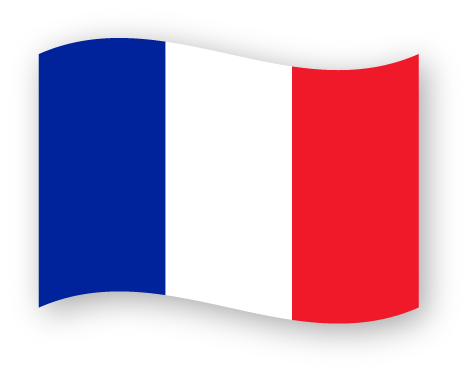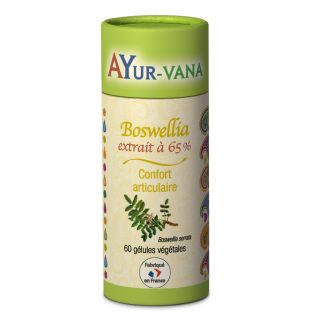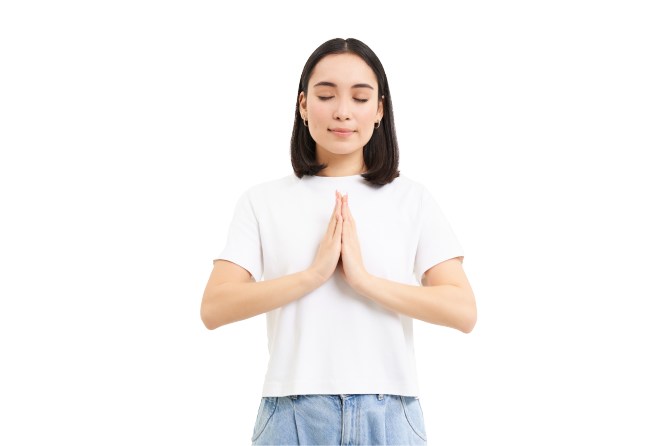While the West tends to view the skeleton as a machine that carries the rest of the body, sometimes breaking down and wearing out over time, Ayurveda sees the skeleton as an integral part of the organism. That's why it's treated through diet, massage and herbs. There's nothing esoteric about it - in fact, quite the opposite! For example, when we put on too much weight, we inevitably put more weight on our knees, and if we spend all our time typing on a computer keyboard, it's our fingers that end up suffering. By rectifying the situation with Ayurveda, we straighten our shoulders, take care of our skeleton and everything around us!
The alarm goes off: you open your eyes and jump out of bed. But things aren't going to be so easy... You put your foot down with difficulty, your whole body feeling "creaky" and your joints aching. You already know it's going to be a tough day. It's probably time to take care of your skeleton!
Ayurveda has developed both care and prevention techniques to take care of your joints from an early age, because they always end up being noticed...
About joints
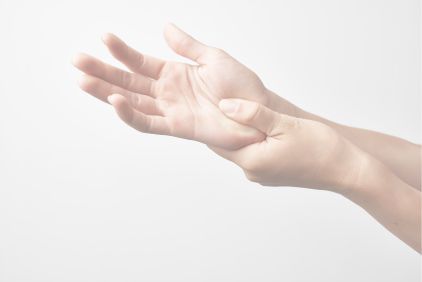
A joint has an elaborate and highly refined nervous system. The mechanism of movement is subtle. When you walk, for example, the joints of the upper and lower limbs, the spine, the pelvis and even the organs, all come into action at the same time. First the brain initiates the movement, and then your joints move, largely thanks to the cartilage that connects them. The slightest grain of sand or swelling in the mechanics awakens pain.
Found throughout the skeleton, joints can be likened to hinges between two neighboring, separate bones. These hinges are essential for movement, and are made up of numerous elements of varying fragility:
➢ The ends of bones, of course, such as the humerus and radius for the elbow joint.
➢ Articular cartilage: a hard, white collagen-based substance covering the ends of every bone in the body, it acts as a kind of shock absorber, enabling flexible movement. Unlike bone, cartilage is not vascularized, so it renews itself very slowly, mainly through the renewal of its cells (chondrocytes), which represent only 10% of its volume. However, it degrades very slowly.
➢ Ligaments: essential for holding bones together, like straps.
➢ Joint capsule: fibrous, elastic structure enveloping the joint.
➢ Synovial membrane: a thin layer of cellular tissue that lines the inside of the joint capsule and secretes a liquid.
➢ Synovial fluid or synovium: secreted by the synovial membrane, it lubricates the joint, preventing friction and nourishing the joint. When more synovium is produced than can be used, swelling can occur. This is called "synovial effusion".
➢ Muscle tendons: these are inserted all around the joint area. Nerve commands for movement are transmitted through them from the muscle to the joint.
Ayurveda identifies two major types of joint discomfort
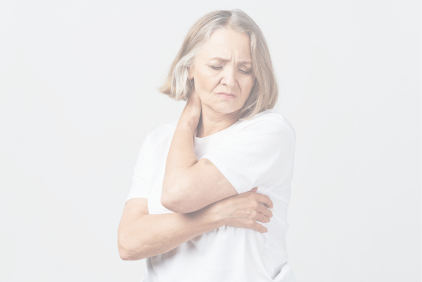
1 - The first type is associated with poor joint nutrition or low bone density, and overall joint weakness. In this case, you'll need the turmeric reflex which, when added to a tiny amount of black pepper to increase its bioavailability, will act deep down to protect the cells. The collateral effect of this combination is an anti-inflammatory action that soothes pain.
2 - The second type is associated with toxic overload in the joints, and is the result of too many toxins in the body. As clumps (the sticky, toxic waste products of incomplete digestion) accumulate in the joints, they first create stiffness and heaviness, which can lead to serious joint problems. These include arthritis.
Arthritis according to Ayurveda
If your pain exists even when you're resting, if it increases at the end of the night, if it hurts in the morning when you get up (about half an hour of "morning unwinding") and the joint is hot, red, swollen and painful, then you're suffering from arthritis. It's a sign of inflammation.
There are several types of arthritis (infectious, tubercular, viral, gout, etc.). Arthritis is the inflammation of one or more (polyarthritis) joints. It occurs mainly between the ages of 35 and 55, and is 4 times more common in women than in men.
In all cases, arthritis represents a major long-term risk of bone and cartilage destruction.
According to Ayurveda, arthritis, or sandhigatavat in Sanskrit, is a disorder of the Vata dosha. It affects joints in the hand, knee, hip, foot and ankle. Initially, it usually manifests itself gently, with a slight discomfort in one or more of these attachments. Then swelling may appear. If nothing is done, arthritis will take advantage of, among other triggers, every change in the weather to appear, at the risk of not disappearing when the rain stops.
To stimulate digestion and promote elimination, Ayurveda recommends a combination of three spices: trikatu. The ginger in trikatu eliminates gas, black pepper regulates body temperature, even warming it slightly to better "burn" food, and long pepper aids digestion.
Osteoarthritis, another recurring ailment
If the pain occurs with effort, eases with rest and at night, and you get up without too much difficulty in the morning (no or little "morning roll"), you're probably suffering from osteoarthritis.
This is the most common form of rheumatism, and corresponds to the mechanical wear and tear of cartilage (degenerative process).
Osteoarthritis is a common disease, especially in people over 50. It can be soothed with joint gels or green clay applied directly to painful joints. Harpagophytum and boswellia, two plants rich in active substances, can also help relieve pain.
Gentle sports such as swimming will also warm cartilage and maintain it on a daily basis. Finally, a light diet rich in raw vegetables, fruit and fish, but low in toxins, is recommended.
The stages of a life
Why do joints always end up hurting? It's true, the question does arise.
When you're 20, you can usually run up a hill, your ankles twisting on the steep ground, your knees straining to the limit, and when you reach the top, you can let yourself fall to the ground and breathe on your wrists.
Then comes the forties, and the hill is already less easy to climb. You watch where you put your feet, try to work on your breathing and your back posture, and when you reach the top of the hill, you sit down gently, distributing the load between your arms and legs.
Finally, from the age of 60 onwards, when there's no small path to the side, you climb the hill gently, ideally with walking sticks, paying attention to all your body's signals, and when you reach the top, you look for a small mound to sit on, as there's no question of letting yourself go on the ground at the risk of not being able to stand up again!
Ayurveda has long understood that the attitude you have when you're 20 has a direct impact on your well-being when you're 60. That's why this treatment method has developed a real understanding and care of the body from the earliest age.
Ayurvedic massage, care and prevention
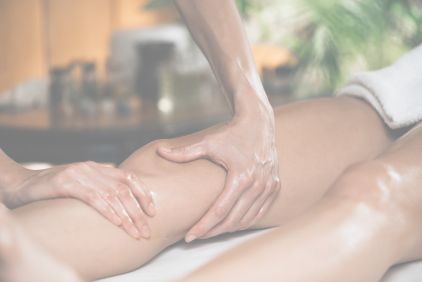
While the first written records of massage date back to 3,000 B.C. and originate in China. An ancient practice, it is thought to have first appeared in India 6,000 years ago. Integrated with Ayurveda, it regulates the body's doshas (or energies)...
In India, as soon as a baby is born, its parents massage it every day. This massage, also known as Shantala, will stimulate the baby's immune system, help it to go through the growing pains without pain, and accustom it to preserving its body.
The massage is a simple procedure that should be part of your baby's daily care routine, just like washing or brushing your teeth.
People who suffer from joint pain or who work all day at a computer will particularly appreciate a finger massage. Take each finger in your other hand and use your thumb to press firmly on it first, then underneath.
A pleasant collateral effect of massage: skin contact, combined with the gentle pressure exerted on the body, stimulates certain hormones, notably oxytocin, secreted by the pituitary gland, which is known to bring joy, satisfaction and love.
Excess weight, an aggravating factor in joint problems
While Ayurveda considers joint protection to be a lifelong process, and the West too often waits until joint pain sets in before taking action, there is one point on which the two practices agree: overweight is an aggravating factor.
Ayurveda therefore recommends the use of plants such as Coleus or Garcinia to slim down and rapidly regain a certain lightness. Weight loss also depends on a good, fluid and efficient transit, as is the case with Triphala, a complex of three berries.
Simple solutions to ease joint pain
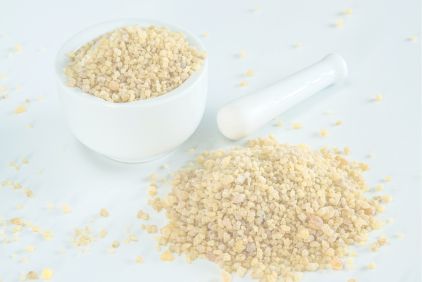
Ayurveda has many "tools" for preserving joints throughout life: start using them right away!
➢ Improve digestion with spices to produce less clumping.
➢ Soothe aches and pains by cooking with spices such as cumin, coriander, ginger, asafetida, garlic and fennel. And above all, sprinkle as much turmeric as possible on all your vegetables: it's a particularly effective anti-inflammatory, especially if combined with a dose (however small) of pepper.
➢ For prevention or at the first sign of joint pain, take a cure of boswellia.
➢ Massage the body with a sesame or linseed oil base to reduce Vata and thus pain. Massage aching joints for longer.
➢ Vitamin C helps reduce skeletal pain. It is found in large quantities in Amalaki or Amla.
➢ Enjoy vegetables and soups without limits
➢ A healthy lifestyle, free from tobacco and alcohol.
➢ Keep in mind that "he who stops rusts" and that physical activity is therefore essential to joint well-being.
The appearance of your joints according to your dosha
Vata has a light, delicate frame. Its hips and shoulders are narrow. Joints are prominent, dry and muscular.
Pitta has a medium frame, well-proportioned joints and firm muscles.
Kapha has broad shoulders and hips. Its joints are large, well-shaped and lubricated. Its muscles are strong.
